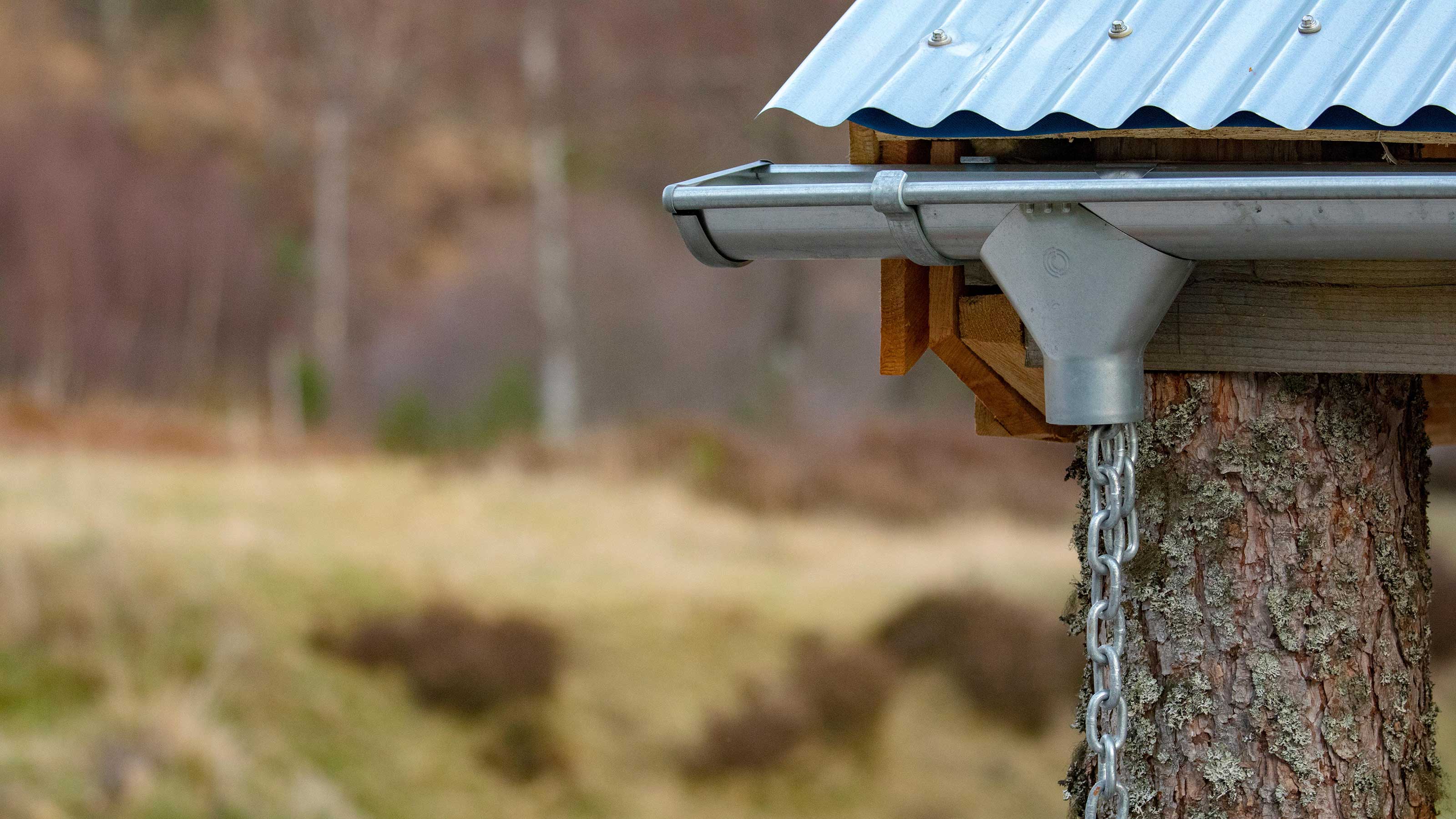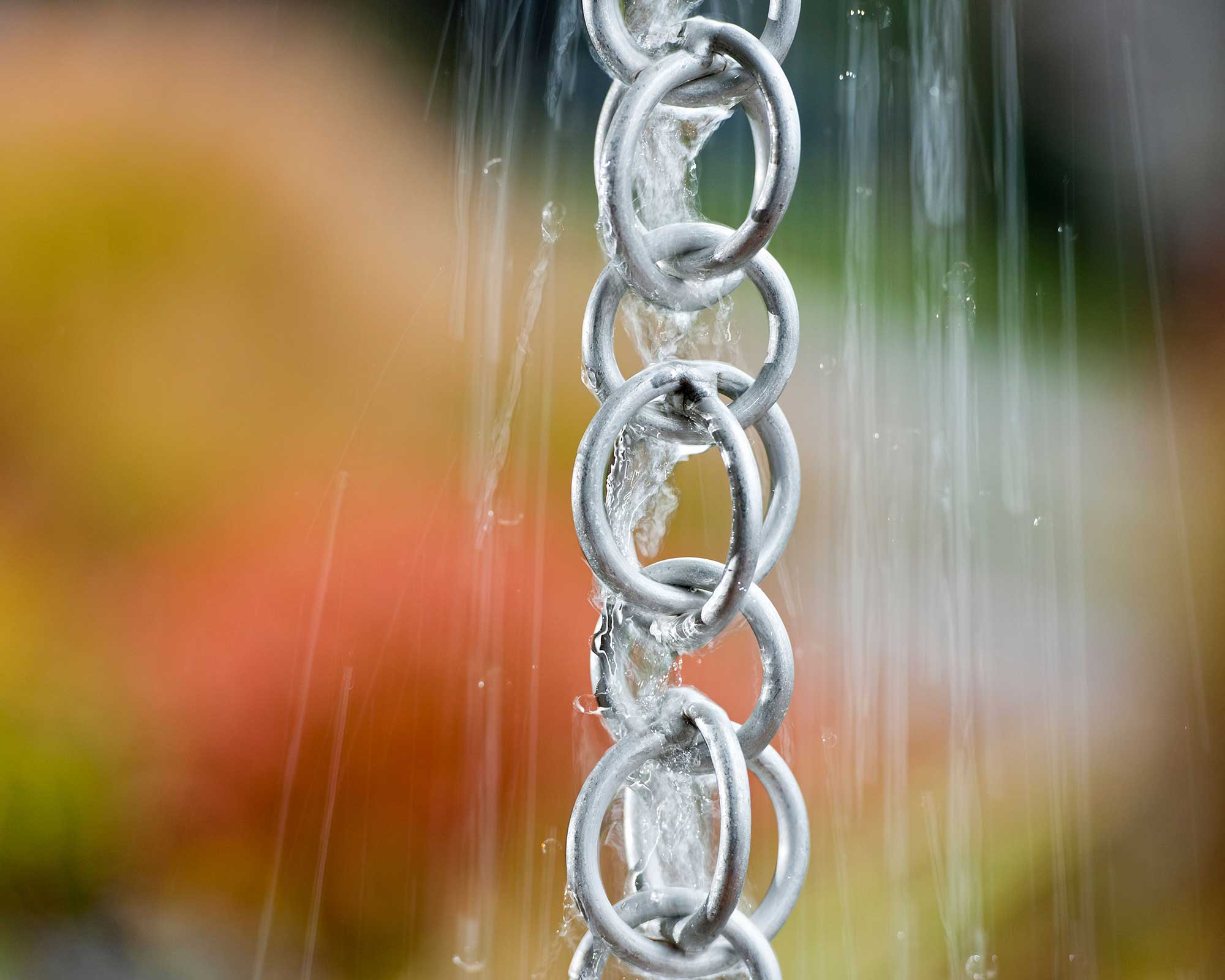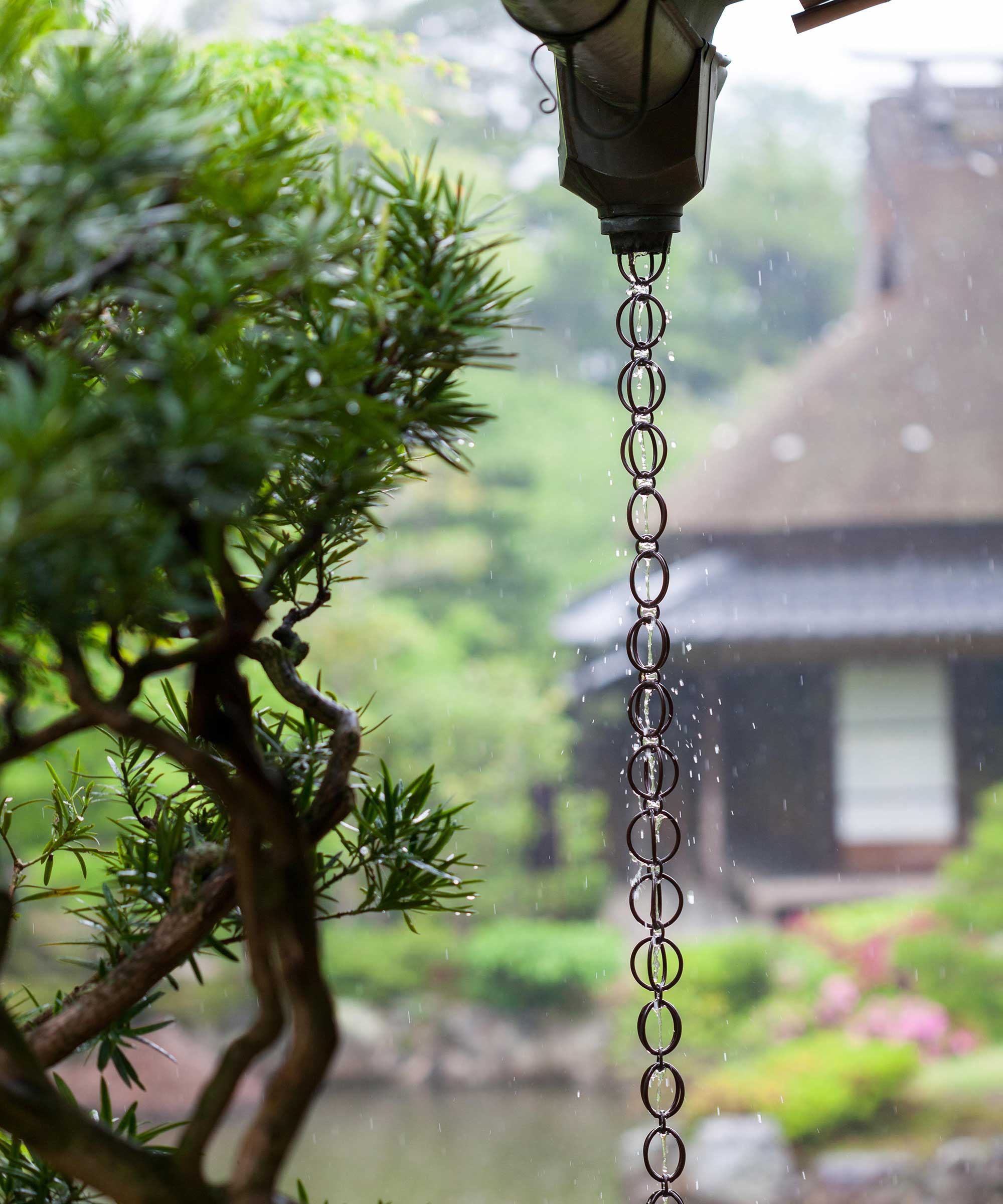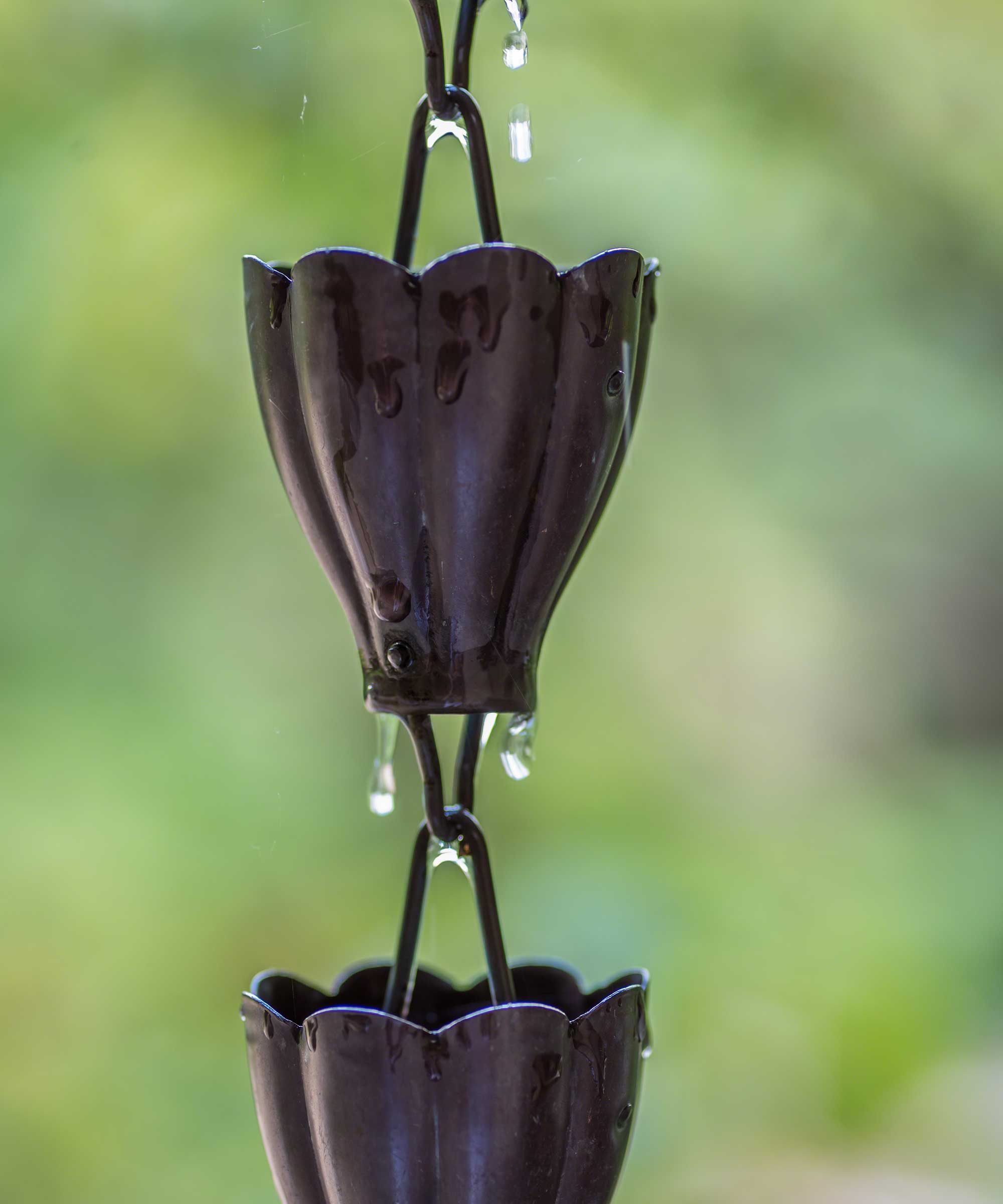What is a rain chain and how does it work? Your questions answered
Ever wondered 'what is a rain chain'? Get the lowdown on these decorative water diverters and find out how to use them in your yard


What is a rain chain, you may ask? These elegant alternatives to a traditional downspout are a decorative way to redirect the rainfall in your backyards and gardens.
When it comes to watering plants, it's always a good eco-friendly idea to conserve and reuse water where possible. And with so much runoff falling from your roof and guttering during the rainy weather, why not collect that rain to use later?
What's more, the use of rain chains can really help with slowing the speed of falling water, which in turn minimizes soil erosion. They also stop water running freely against the side of your house, keeping it away from the foundations.

What is a rain chain?
A rain chain is a simple vertical chain that channels water away from your roof and guttering, and into a specific place, such as a large container or water barrel. You might have thought they're purely decorative, but not so!
Originating in Japan many hundreds of years ago, they are still are common sight there on everything from temples to houses. Rain chain ideas have grown in popularity around the world in recent years, and although they are still a key feature of Japanese garden ideas, you'll now see them used more widely as both a practical and decorative feature in many different styles of gardens.
You can use virtually anything to make a rain chain, as long it will cause the water to flow downwards. There are many ornamental versions of rain chains (available on Amazon) with little buckets or fluted cups, but you can use standard chain link too.
For a DIY approach, shower rings could work, along with interconnected key rings – just a few of the many homemade water feature ideas that can add a touch of individuality to your space.

How does a rain chain work?
Normally, roof rainwater would flow into an enclosed pipe and down a drain. But because water naturally follows the path of least resistance, when a rain chain is attached to your guttering or eaves it provides a clear direction for any rain to fall straight downwards.
You'll need to place a container beneath a rain chain to collect the accumulating rainwater. This could be a pot, basin, or water butt. You can even make a rain chain an integral part of your water feature ideas too.
Any rain chain you choose should also be strong enough to withstand high winds or heavy rains.

Why is a rain chain beneficial for the garden?
A rain chain is an attractive and decorative feature in itself – a bit like a wind chime, it adds a pleasant aesthetic to your backyard and can be a mood-enhancing addition to a sensory garden.
But there are also a multitude of rainwater benefits for watering plants, and a rain chain can be a brilliant option if you're considering the best methods for how to collect rainwater so that you can re-use it in your garden for hydrating plants and crops.
Adding a simple rain chain to a shed or garden building, for example, can help to harness the water run-off from the roof, directing it into a container where you can then store the rainwater for use on your garden.
Tom Hilton, director of hydroponic specialists National Greenhouse, says: 'Rainfall is the obvious natural resource for plants when it comes to watering. It’s incredibly beneficial for them as it is considered to be one of the purest forms of water, containing no salts and minerals. This purity makes it a very clean hydration source for your plants - both indoor and outdoor ones.'
Sean Lade, director of Easy Gardening Irrigation, adds: 'Rainwater has higher levels of nitrogen which boosts growth. Some plants can also react badly to normal drinking water that comes straight from the tap.'
'If you have any plants in your garden that aren’t looking their best after watering them using your garden tap, switching to rainwater might help them to flourish.'


Freelance writer and author Flora Baker is a keen amateur gardener and houseplant enthusiast. Her small garden in South London is a constant work in progress as she gets to grips with snail prevention, DIY trellises and what to plant in shady spots overrun with ivy.
